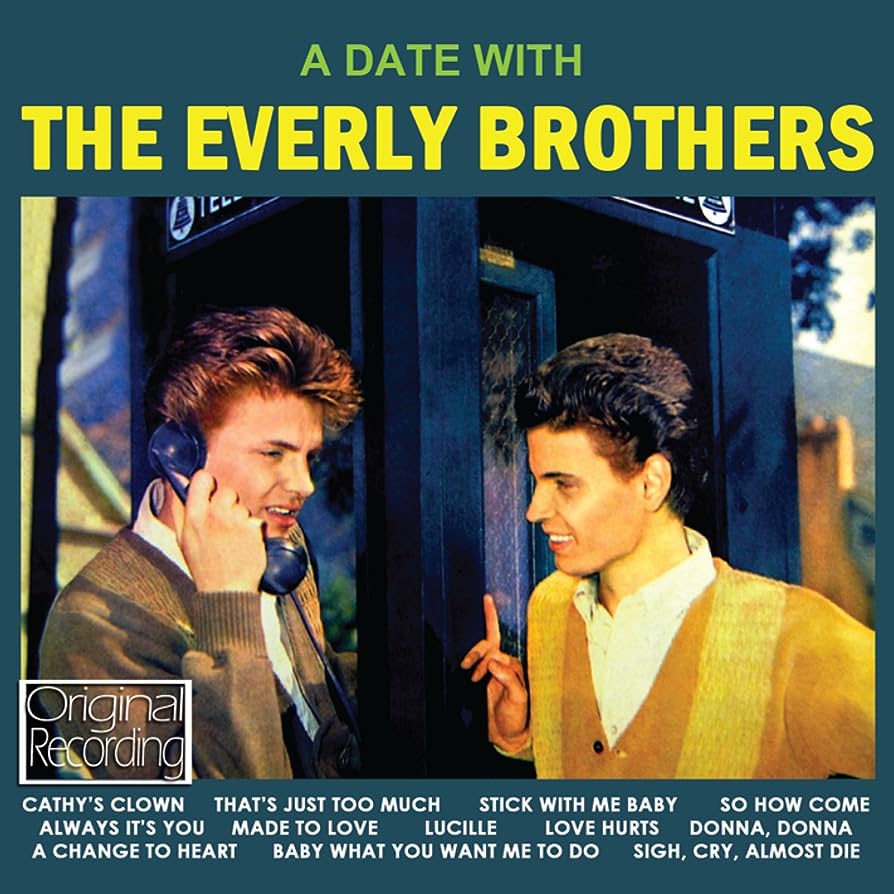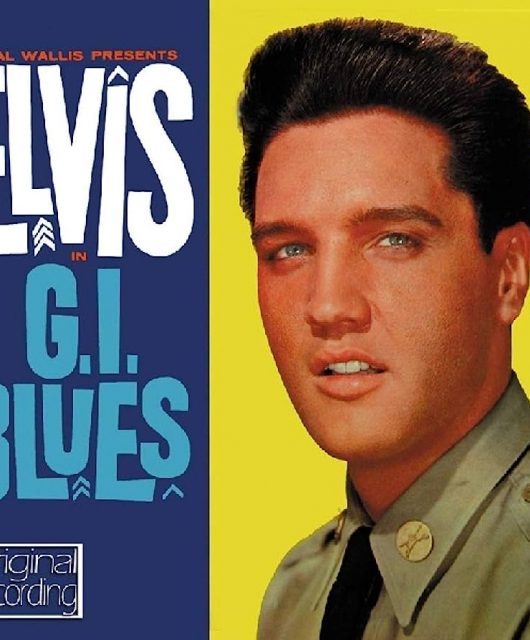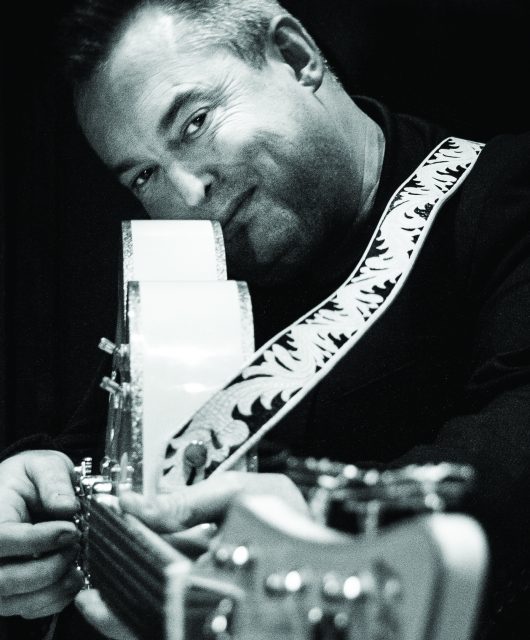A Date With The Everly Brothers was the Kentucky duo’s second album for Warner Bros, released at the end of 1960, an incredible year which saw them dominate the singles charts in both the United States and the UK. Featuring the brothers’ all-time best-seller, Cathy’s Clown, it marked the peak of their popularity… By Jack Watkins
While the early 60s was a challenging time for most rock’n’roll pioneers, The Everly Brothers, for a while at least, managed to swim against the tide, both creatively and commercially.
Although some fans feel they never surpassed the beautiful, unique simplicity of their recordings for Cadence in the late 50s, their first outings on Warner Brothers, after they’d signed to them in 1960, were consistently high class. They were rewarded with a continued string of hits, especially in Britain where they were even more popular than in the US. A Date With The Everly Brothers, the duo’s second album for their new label, released in October 1960 in the States, would be one of their most successful LPs, and featured their worldwide best-selling song, Cathy’s Clown.
The success of the latter had ensured the move to Warners was not one that left them with egg on their faces. Having joined Cadence in 1957, they had forged a distinctive sound with much input from label boss Archie Bleyer, as well as from the experienced Nashville guitarist and studio whizz Chet Atkins. Between 1957-59, Wake Up Little Susie and All Have To Do Is Dream had been Stateside chart-toppers, while Bye Bye Love, Bird Dog, Problems and (’Til) I Kissed You had all been Top 5. In the UK in the same period, the results had been almost as impressive. So the Kentucky duo badly needed to show they could achieve the same level of success without Bleyer.
Added to this was the pressure of being on a costly new contract. They had been hot property when it became known that their time with Cadence was at an end and their manager Wesley Rose, of the Acuff-Rose music publishers, had managed to secure them a highly advantageous new deal. Warner Brothers, a legendary film studio, was a big name but not, at that moment, a hugely successful record company, only having established the label in 1958 as a vehicle for their teenage matinee idol, Tab Hunter. While the actor had enjoyed a No.1 with Young Love for Dot in 1957, sales of his discs on Warners had been ordinary.
Johnny Carroll and Bob Luman were among the rockabillies who recorded for Warners in the company’s attempt to
appeal to the youth market, but the label’s sole Top 10 hit had been the novelty number Kookie, Kookie (Lend Me Your Comb), sung by Edd Byrnes, with Connie Stevens, in 1959.
Desperate to lure bigger names, a fading Bill Haley was signed, in a move not destined to be successful for either party. But the Everlys were still at the top of the game, and Rose was able to secure for them what was effectively rock’n’roll’s first million dollar contract, lasting 10 years. Don and Phil were granted creative control of their work, from writing, recording and production, to the right of approval of all releases alongside Rose.
Keen to hit the ground running, by March 1960 they were in the studio, with Cathy’s Clown laid down at one of the earliest sessions. While Felix and Boudleaux Bryant, with their uncanny knack of churning out hook-laden songs centred round teenage woes, had supplied most of the Everly’s Cadence hits, from Bye Bye Love to Problems and Poor Jenny, the Everly writing credit had appeared on the million-selling (’Til) I Kissed You, When Will I Be Loved, ravishing B-sides like I Wonder If (I Care as Much), Maybe Tomorrow, Since You Broke My Heart and Oh, What A Feeling.
They knew – or at least Don did (there would later be an angry legal battle between the brothers over copyright) – how to craft songs about unhappy or frustrated love. So it is no surprise that Cathy’s Clown came from the pen of Don Everly, with subsequent assistance from Phil. What was new, however, was the sound.
After the switch to Warners, the Everlys continued recording in Nashville, using the same session personnel, including Atkins, Hank Garland, Floyd Cramer and Buddy Harman – and the same engineer, Bill Porter. However, whereas the rigorous control that Bleyer exerted in the studio at Cadence had resulted in a uniformity of sound, as Porter – quoted by Roger White in Walk Right Back: The Story Of The Everly Brothers – explained, at Warners there was more freedom. “Don and Phil were also more involved in the music. They spent a lot of time developing the sound of their guitars. Don got quite heavily into it.”
Don later recalled that the Cathy’s Clown lyric came from a recollection of his childhood sweetheart Catherine, blended in with thoughts about his currently unhappy marriage. You could certainly catch the bitterness in his husky vocals on the verse, sung over a piano that bordered on beer joint country. The brothers’ cascading harmonies, with Phil as always singing three notes higher than Don’s lead, soared more heavenwards than ever.
As the era of the big-sounding beat ballad arrived, Cathy’s Clown was among the forerunners. Buddy Harman supplied the thundering, pacing, rolling drum sound which, apart from the harmonies, is probably what strikes most listeners first about the song. Harman, a stellar member of Nashville’s overworked ‘A-team’, was for once let off the hook to add his own creative contribution, thanks to the Everlys’ willingness to try something new. Cathy’s Clown topped the charts in the States and, released to coincide with the brothers’ first UK tour in April 1960, was No.1 in the UK singles listings for eight weeks.
The flipside, also featured on A Date…, was a Bryants’ composition, Always It’s You. It reached US No.56 in its own right and is one of the greatest of the Everly Brothers’ tender harmony songs. Achingly soulful, it retains the classic reverb guitar sound so favoured by Chet Atkins, along with a catchy four-note hook and a celesta – a popular instrument at the time – notably having featured on Buddy Holly And The Crickets’ Peggy Sue flip, Everyday in 1957.
The Everlys were unusual in this period in making albums that were not entirely stacked with previously released songs. However, there was one other major track on the LP that was a big seller, Lucille. The brothers had already cut a couple of Little Richard songs at Cadence – Rip It Up and Keep A Knockin’ – without exactly tearing up any trees. Their clean, high-pitched Appalachian harmony style was in many ways the total opposite of the sultry Deep South R&B screech of the Georgia Peach. In once more returning to the back catalogue of an artist they clearly loved, however, this time they created something special.
Chosen because they needed a heavier song to hold their own with some of the louder rock acts they appeared with live, when it came to recording Lucille in the studio, without the ability at that time to multitrack, they hit upon the idea of getting eight session pickers to play the same opening riff simultaneously. However, amidst that giant wall of sound, the short solo came from accomplished steel guitarist Jimmy Day. It was the dramatic, immense production on the track, reckoned Phil Everly, which enabled such a familiar song (a Top 30 hit for Little Richard only three years before) to go again as a single, making No.4 for the Everlys in both the US and UK.
Even with classics like these on A Date…, some might nominate their favourite track as Love Hurts. One of the Boudleaux Bryants’ most bitter love songs, although Roy Orbison’s version on the B-side of Running Scared might be better known, it was actually written for the Everlys. Even so, unlike Cathy’s Clown which feels definitively like an Everly Brothers song, the intense Love Hurts has leant itself to repeated new versions, with arguably the most searing being by Gram Parsons and Emmylou Harris, on Parsons’ posthumously released 1974 album, Grievous Angel.
The Bryants also supplied So How Come (No One Loves Me). On the face of it, it’s just a solidly effective, regulation rocker. However, it was adopted by The Beatles in their pre-hit making days at the Cavern, when George Harrison would sing a few numbers during a light-hearted part of the set. Apparently tickled with the song, especially its title, Harrison would take delight in whimsically introducing the song as “So how come, brackets, no one loves me, brackets.”
The country blues of Jimmy Reed’s Baby What You Want Me To Do was well done, though it is impossible to listen to it without remembering hearing Elvis’ cheeky, jamming take on the 1968 Comeback Special. Other fine songs on the album were the lively opener, Made To Love (ironically, later a hit for Eddie Hodges on Cadence), and Donna, Donna, two songs capturing the Everly Brothers at their most infectiously poppy. That’s Just Too Much was another heartfelt harmony ballad in the style of the gentle Cadence classics.
Written by country singer and songwriter Mel Tillis, Stick With Me Baby was another very strong track with some fabulous electric guitar from Hank Garland. It later went on the B-side of the brothers’ 1961 single Temptation and charted in its own right (US No.41). While A Date With The Everly Brothers made No.9 in the US, it peaked at No.3 in the UK in a memorable year in which their records were seldom absent from the singles chart.






